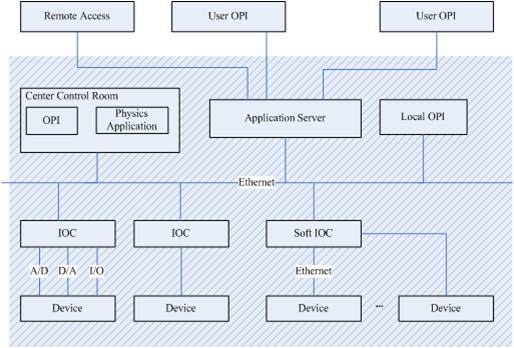Accelerator Control
l It is a large scale real-time and interactive control system with high reliability and stability.
l Adopted various advanced digital processing system which effectively improve data measurement accuracy, such as the digital PS controller and the new timing module.
l Integrated with many new computer techniques, hardware and software,such as RDB Archive system and the redundancy IOC system,which are used for the soft interlock system realized by the pooling technique.
l Designed a 1000Base-T control network instead of the field bus for most devices and adopted the VLAN instead of the separate sub network. Most of devices are directly connected by the control network and integrated with EPICS system. Designed the redundancy backbone to ensure the reliability of the network.
l A uniform system development and runtime environment of hardware and software is adopted in the control system, including EPICS environment and high level physical application environment. The high level physical application can be conveniently integrated with the control system. With the SSRF center database, a set of tools were developed to record and manage the running procedures of the SSRF.
l Designed and implemented an elaborate machine protection system to ensure the safe, efficient, and reliable operation and maintenance of the facility. A series of effective measures had been used to increase reliability of the system, including device redundancy, hot standby, EMI, EMC, grounding, isolation, filtering, shielding and so on.



 Copyright©2006.12 Shanghai Advanced Research Institute.
Copyright©2006.12 Shanghai Advanced Research Institute.